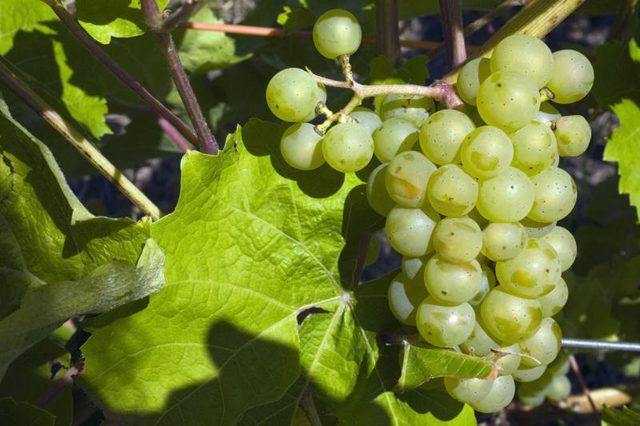Bulbs
Flower Basics
Flower Beds & Specialty Gardens
Flower Garden
Garden Furniture
Garden Gnomes
Garden Seeds
Garden Sheds
Garden Statues
Garden Tools & Supplies
Gardening Basics
Green & Organic
Groundcovers & Vines
Growing Annuals
Growing Basil
Growing Beans
Growing Berries
Growing Blueberries
Growing Cactus
Growing Corn
Growing Cotton
Growing Edibles
Growing Flowers
Growing Garlic
Growing Grapes
Growing Grass
Growing Herbs
Growing Jasmine
Growing Mint
Growing Mushrooms
Orchids
Growing Peanuts
Growing Perennials
Growing Plants
Growing Rosemary
Growing Roses
Growing Strawberries
Growing Sunflowers
Growing Thyme
Growing Tomatoes
Growing Tulips
Growing Vegetables
Herb Basics
Herb Garden
Indoor Growing
Landscaping Basics
Landscaping Patios
Landscaping Plants
Landscaping Shrubs
Landscaping Trees
Landscaping Walks & Pathways
Lawn Basics
Lawn Maintenance
Lawn Mowers
Lawn Ornaments
Lawn Planting
Lawn Tools
Outdoor Growing
Overall Landscape Planning
Pests, Weeds & Problems
Plant Basics
Rock Garden
Rose Garden
Shrubs
Soil
Specialty Gardens
Trees
Vegetable Garden
Yard Maintenance
How Does a Grapevine Reproduce?
How Does a Grapevine Reproduce?. Grapevines (Vitis spp.) reproduce from stem and root cuttings, as well as from seeds. Before propagating new grapevines, check to see if the grapevine plant you want to reproduce is a hybrid or non-hybrid. Hybrid grapevines result from grafting a cutting of one type of grape onto the rootstock of a different type of...

Grapevines (Vitis spp.) reproduce from stem and root cuttings, as well as from seeds. Before propagating new grapevines, check to see if the grapevine plant you want to reproduce is a hybrid or non-hybrid. Hybrid grapevines result from grafting a cutting of one type of grape onto the rootstock of a different type of grape. Cuttings taken from hybrid grapevines do not produce plants exactly like the parent plant. Grapevines grown from seeds can also differ from the parent source. However, rooting cuttings -- asexual propagation -- of non-hybrid grapes yields new plants like the parents.
Although grapes grow in all USDA plant hardiness zones, different species thrive in different locations. When reproducing a grapevine from outside your region, check the growing requirements for the particular species.
Hardwood Cuttings
Take hardwood cuttings from a desired plant while it's dormant during the fall or winter, up until spring bud break. Use current year stems. The best cuttings are taken from stems as thick as a pencil -- or up to 3/4-inch thick. The wood inside should be light green with a small pith. Grapevine stems have more buds within the first 2 feet of the junction with another stem, making this portion of a shoot the most desirable for cuttings.
How to Take a Cutting
Cuttings must be planted with the growth end of the cutting facing up. One way to be sure you get the right end up is to make a straight cut right below a node, or leaf bud, and then make a slanted cut at the top of the cutting. The slanted cut serves as a mnemonic -- growth buds point up and the slant points up. With a sharp knife, make cuttings 12 to 18 inches long with two to four leaf nodes.
Cold Storage
Use wet paper or moist sphagnum peat moss to keep the cuttings from drying out. Place the cuttings and absorbent material in a plastic bag, and keep them in a refrigerator or an unheated area such as the garage until four to five weeks before the last killing frost. Check the cuttings occasionally to make certain they don't dry out, but do not keep them wet.
Callous Cuttings Before Planting
Cuttings develop callouses -- swellings on the root end of the cutting -- before they root. In a warm location, with temperatures or lowest heat of 85 degrees, cuttings callous within two weeks. In cooler locations, it can take four weeks. Begin the callousing process by removing the cuttings from cold storage and standing them in 2 inches of water overnight.
Dip the hydrated cuttings in a rooting hormone and place them in fresh absorbent material in a plastic bag. Place the bag on top of your refrigerator where the warmth from the condenser will encourage callousing, or pot the cuttings in gallon pots filled with 3 parts perlite and 1 part sphagnum peat. Place the pot in bright light but not in direct sunlight. Water with room temperature or lukewarm water, as cold water will slow down the rooting process. Keep the potting mix slightly moist. Avoid overwatering.
Plant Cuttings
Plant rooted cuttings directly into the soil in a permanent location, or grow the cuttings in pots with drainage holes in the bottom until the dormant season in fall. Grapes grow in a variety of soil types, but prefer a sandy loam with a pH level from 5.5 to 7. Give grapevine cuttings at least 1 inch of water per week until shoots are 6 inches long, and then begin weekly fertilizer applications until midsummer. Use a balanced liquid fertilizer, such as 16-16-16, prepared according to label instructions.
Greenwood Cuttings
Take greenwood cuttings in the spring. Make cuttings 4 to 6 inches long with two to three leaves. Remove all leaves except the top leaf. If the leaf is large, cut it in half to reduce the need for nutrients and water. Dip the cutting in rooting hormone, and place the cutting in a 3-to-1 perlite and peat mixture in a gallon-sized pot. Place a clear plastic bag over the cutting to preserve moisture. Keep the potted cutting in bright light. Greenwood cuttings usually root within six to 30 days, depending upon the temperature. Plant your new grapevine and follow the same watering and fertilizing regimen as the one used for hardwood cuttings.